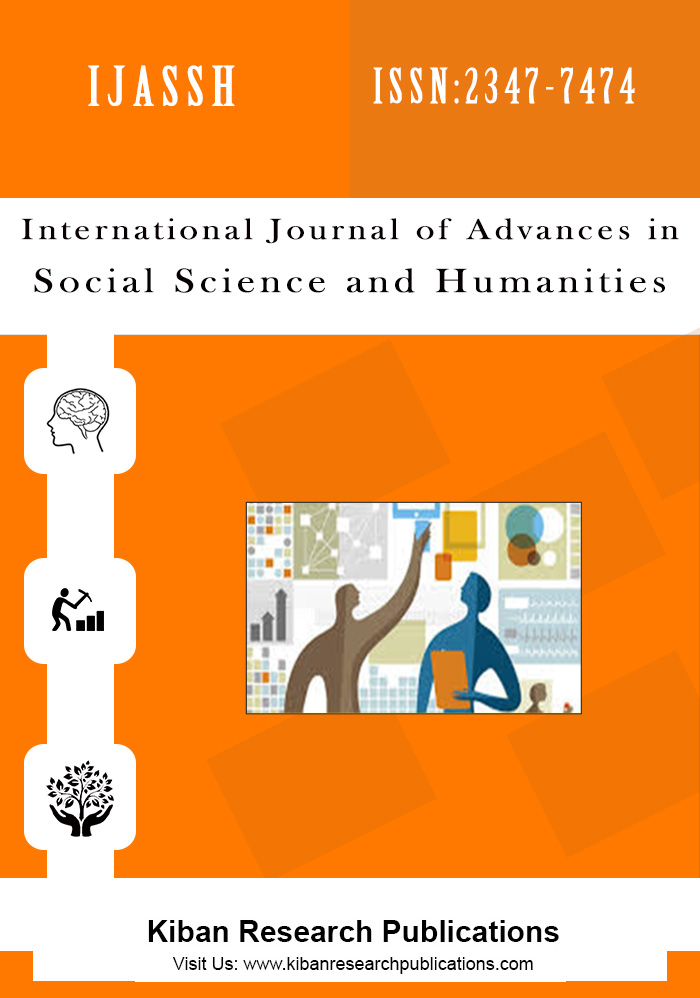Spirituality in the Post Human Age: Digital Technologies and Screened Divinity
Abstract
In the beginning, our premise is that the acceptance of our need for practical spirituality could minimize the post human age unfavorable consequences. More than once in history have humans been taken aback seeing that what had masqueraded for a blessing eventually turned out to be a ghastly disaster. The digital technologies that surround us, have undoubtedly blessed our lives in many ways, apparently improving them significantly. The devices I am and will be referring to, are also known as smart phones, television, computers, laptops, what we might know today as our intelligent extended selves or the most favorable static entertainment. Some of these have embedded in them, online social networks, dictionaries, movies, commercials, live broadcasts and the world wide web, which seems to have limitless accurate information regarding any thought that might come through one’s mind. These mindless and conscienceless companions are highly accessible and seem to have a strong impact, not only on human interaction, but also in regards to human beliefs and values
Keywords: Post Humanism, Digital technologies, Spirituality
References
Archimandrite Aimilianos Orthodox Spirituality and the
Technological Revolution, Spiritual Instruction and
Discourses, vol I – The Authentic Seal (Ormylia
Publishing, Greece 1999) p.343-352-web:
http://www.orthodoxytoday.org/articles5/AimilianosTechn
ology.php
(Baijal & Srinivasan, 2010 ; Lehmann et al., 2001; Travis,
Tecce, Arenander, & Wallace, 2002 ) in Andrew B.
Newberg, Nancy Wintering , Mark R. Waldman, Daniel
Amen, Darma S. Khalsa, Abass Alavi, Cerebral blood flow
differences between long-term meditators and non-meditators, Consciousness and Cognition 19 (2010) 899-
Journal homepage: www.elsevier.com/locate/concog
(Lutz, Brefczynski-Lewis, Johnstone,&Davidson, 2008;
Lutz et al., 2009) in Andrew B. Newberg, Nancy
Wintering , Mark R. Waldman, Daniel Amen, Darma S.
Khalsa, Abass Alavi Cerebral blood flow differences
between long-term meditators and non-meditators,
Consciousness and Cognition 19 (2010) 899-905. Journal
homepage: www.elsevier.com/locate/concog
Nicholas Carr, The Shallows: What the internet is doing
to our brain ( W.W. Norton & Company Ltd. 2011) pp. 32-
Personal translation from Virgiuliu Gheorghe, Efectele
televiziunii asupra mintii umane- si despre crestera
copiilor in lumea de azi, (Editura Institutul de Cercetari
Psihosocialesi Bioetica, 2015) pp. 17
Personal translation from Virgiuliu Gheorghe, Efectele
televiziunii asupra mintii umane- si despre crestera
copiilor in lumea de azi, (Editura Institutul de Cercetari
Psihosocialesi Bioetica, 2015) pp. 99
I owe this idea to : Mihail Neamtu, Social Media si
Izgonirea Omului launtric, Iunie 2016 –personal blog;
web: https://mihailneamtu.org/2016/06/14/social-media-siizgnonirea-omului-launtric/
Webhttp://www.wsj.com/articles/SB1000142412788732433920
Personal translation from: PR. Vasilios Thermos; trad.:
pr. Serban Tica, Despre problemele vietii crestine
contemporane, (Bucuresti: Editura Sophia, 2012) pp. 47-
Archimandrite AimilianosOrthodox Spirituality and the
Technological Revolution, Spiritual Instruction and
Discourses, vol I – THE AUTHENTIC SEAL (Ormylia
Publishing, Greece 1999) pp.343-352 –web:
http://www.orthodoxytoday.org/articles5/AimilianosTechn
ology.php
Craig Detweiller, IGods How Technology shapes our
spiritual and social lives (Brazos Press, a division of
Baker Publishing Group, USA 2013) pp. 2-3
Nicholas Carr, The Shallows: What the internet is doing
to our brain ( W.W. Norton & Company Ltd. 2011) pp. 18-
I owe this idea and quote to Charlie Chaplin, 1940, The
Great Dictator, Carter DeHaven, United States of
America, retrieved from




